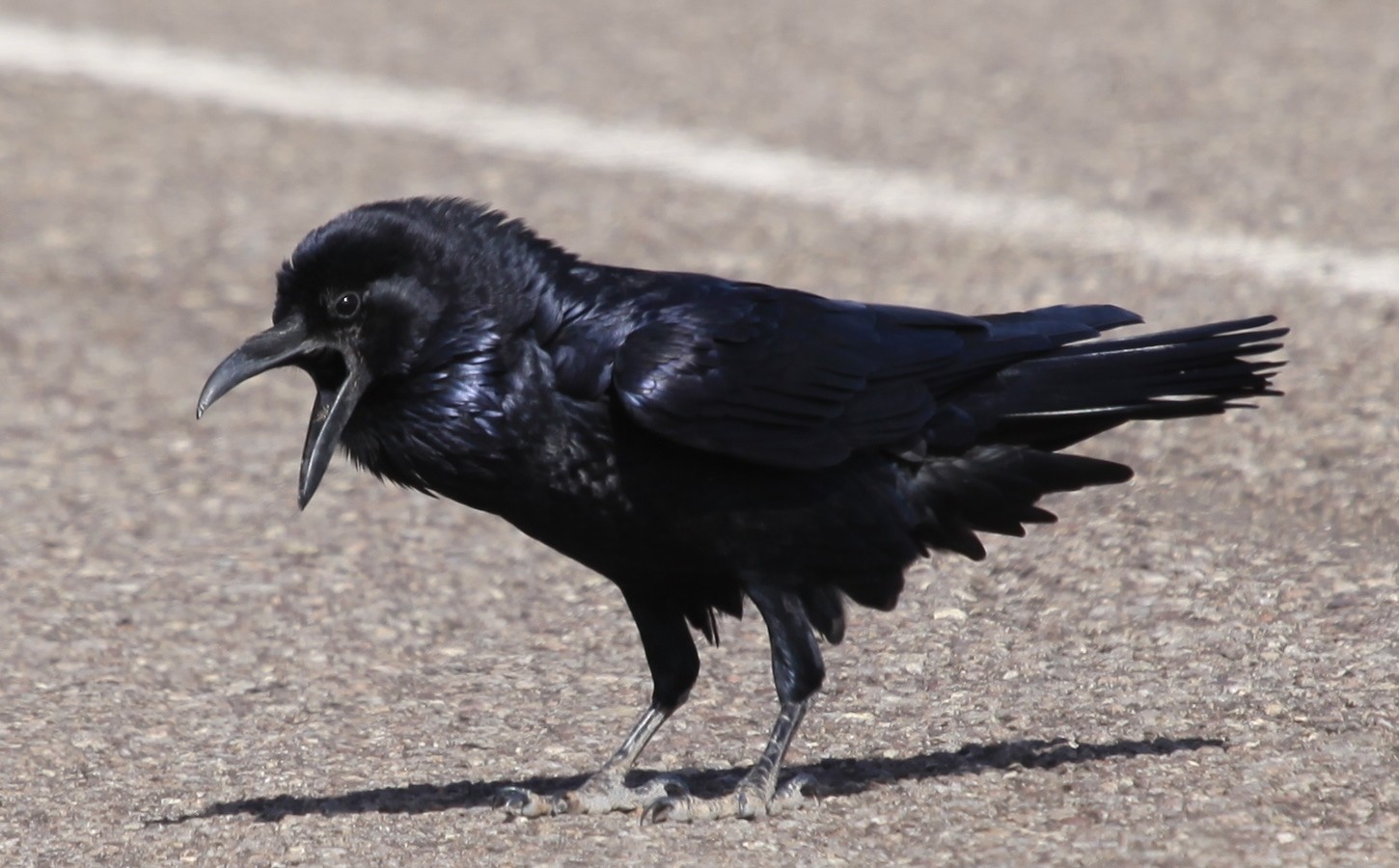Chihuahuan Raven
A species of Crows Scientific name : Corvus cryptoleucus Genus : Crows
Chihuahuan Raven, A species of Crows
Botanical name: Corvus cryptoleucus
Genus: Crows
Content
Description General Info
 Photo By panza-rayada , used under CC-BY-SA-3.0 /Cropped and compressed from original
Photo By panza-rayada , used under CC-BY-SA-3.0 /Cropped and compressed from original Description
The Chihuahuan raven (Corvus cryptoleucus) is a species of bird in the family Corvidae that is native to the United States and Mexico. American white-necked raven was an earlier English name. The proportions resemble the common raven with a heavy bill, but is about the same size as a carrion crow, or slightly larger than the American crow (44–51 cm (17–20 in) long). The plumage is all-black with a rich purple-blue gloss in good light. Like the forest raven, little raven, fan-tailed raven and Australian raven, it is one of the smaller raven species. The larger species of raven are the common raven, thick-billed raven, white-necked raven and brown-necked raven, with the common and thick-billed ravens being the world's largest raven species and the little and fan-tailed ravens being the smallest. The Chihuahuan raven is similar in appearance to the Australian raven, although with dark brown irises and whiter feather bases. The nasal bristles extend farther down the top of the bill than in any other Corvus species to about two-thirds the length. In addition, the Chihuahuan raven is similar in appearnace to the white-necked raven of east Africa because the base of the neck has feathers that are white-ish (seen only when ruffled in strong wind). The bill, legs and feet are black. 
Size
50 cm
Colors
Black
Life Expectancy
13 years
Nest Placement
Tree
Clutch Size
1 - 8 eggs
Incubation Period
1 brood
Number of Broods
18 - 20 days
Nestling Period
30 - 35 days
Feeding Habits
Chihuahuan Raven's diet is omnivorous and opportunistic, including insects (grasshoppers, beetles), vertebrates (fish, amphibians, reptiles, birds, mammals), plant matter (grains like sorghum, corn, milo, wheat, barley, oats, rye, sunflower, pecan, melon, peanut, prickly pear, buckthorn, hackberry, and seeds), as well as roadkill and bird eggs. They also consume food scraps and cache surplus food.
Habitat
The chihuahuan Raven inhabits arid regions, thriving in desert and grasslands dotted with yucca, mesquite, and creosote bush, primarily across the Southwestern and Midwestern United States and northern Mexico. These birds favor low to mid-elevations, adapting to environments like pinyon-juniper woodlands and riparian zones with cottonwood and sycamore. Post-breeding, they frequently explore agricultural and developed areas for foraging.
Nest Behavior
Chihuahuan Raven's nesting period involves the female building the nest. Egg-laying patterns aren't specified, but the nest is continually reused and enlarged across breeding seasons, indicating a pattern of renovation and parental investment in nest fidelity.
Nest Characteristics
Chihuahuan Raven constructs bulky nests on cliffs, trees, poles, windmills, or oil derricks using mesquite twigs, lined with yucca fiber, bark, hair, and various soft materials. Nests are about 18 inches wide, 13 inches tall, with a 7-inch-wide, 5.5-inch-deep cup. Pairs often reuse and expand these structures.
Dite type
Omnivorous
General Info
Feeding Habits
Bird food type
Sounds
Call
Recording location: United States
Behavior
Chihuahuan Raven demonstrate a blend of solitary and social tendencies. They engage in complex courtship rituals such as mutual preening and synchronized acrobatic flights, which assist in pair bonding. Throughout the day, they occupy, defend, and interact within their defined territories, though they may join flocks where resources are abundant. They express a clear social hierarchy within these gatherings, with dominant individuals asserting themselves through distinct postures and vocalizations, which include showcasing their unique white neck feathers. Chihuahuan Raven are particularly cooperative during times of threat, collectively defending against predators near their nesting sites.
Distribution Area
The Chihuahuan raven occurs in the Southwestern and Midwestern United States and northern Mexico, including southeastern Arizona, southern New Mexico, southeastern Colorado, western Kansas, western Oklahoma, and southern and western Texas. 
Species Status
Not globally threatened.
Scientific Classification
Phylum
Chordates Class
Birds Order
Perching birds Family
Crows and jays Genus
Crows Species
Chihuahuan Raven